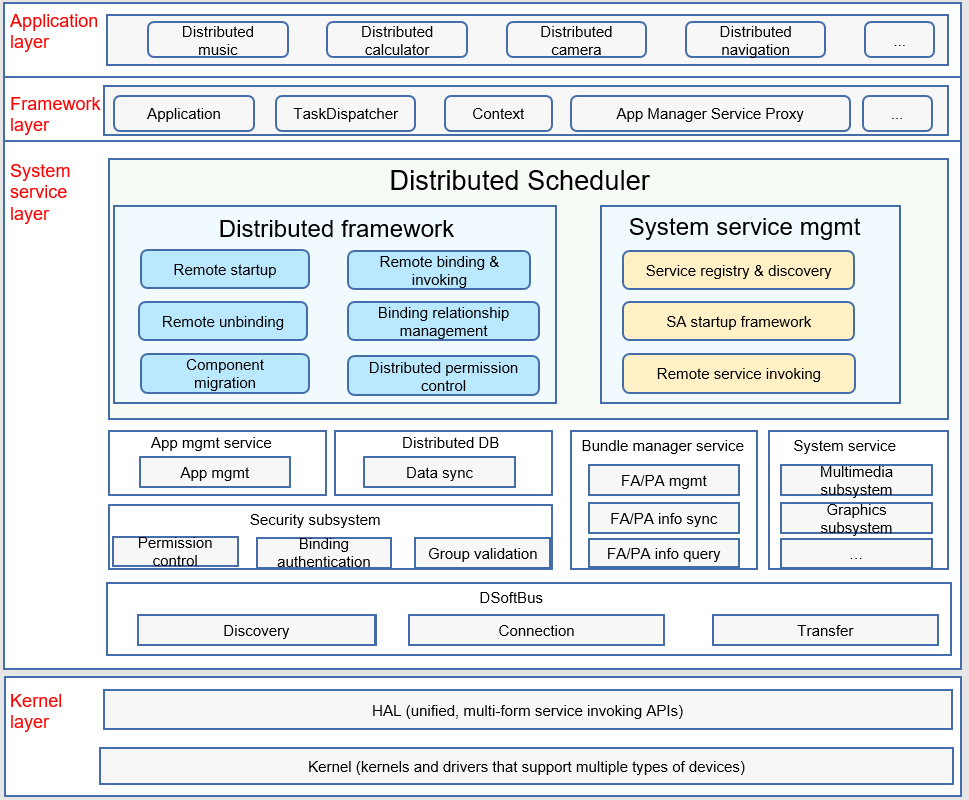Distributed Scheduler
Introduction
Distributed Scheduler is used for cross-device component management. It allows the local device to access or control remote components, and enables app collaboration in distributed scenarios. Its main functions are as follows:
- Remote ability startup: Starts an ability on a remote device.
- Remote ability migration: Migrates an ability to a remote device.
- Remote ability binding: Binds an ability on a remote device.
- System service management: Provides system service startup, registration, and query on the local device as well as system service query on a remote device.
System Architecture
Figure 1 Distributed Scheduler architecture

Directory Structure
/foundation/distributedschedule
├── dmsfwk # DMS framework (DMS is short for Distributed Manager Service, also called the Distributed Scheduler Service)
├── safwk # System ability framework
├── samgr # System ability manager
├── dms_fwk_lite # Lightweight DMS framework
├── safwk_lite # Lightweight foundation process
├── samgr_lite # Lightweight system ability manager
Repositories Involved
Distributed Scheduler subsystem
distributedschedule_dms_fwk
distributedschedule_safwk
distributedschedule_samgr
distributedschedule_safwk_lite
hdistributedschedule_samgr_lite
distributedschedule_dms_fwk_lite